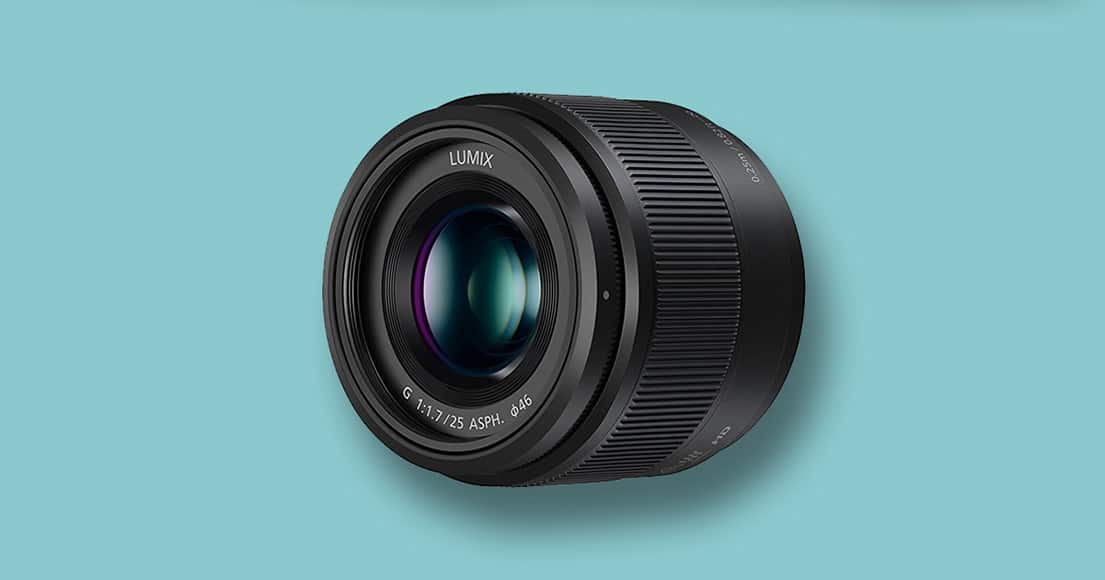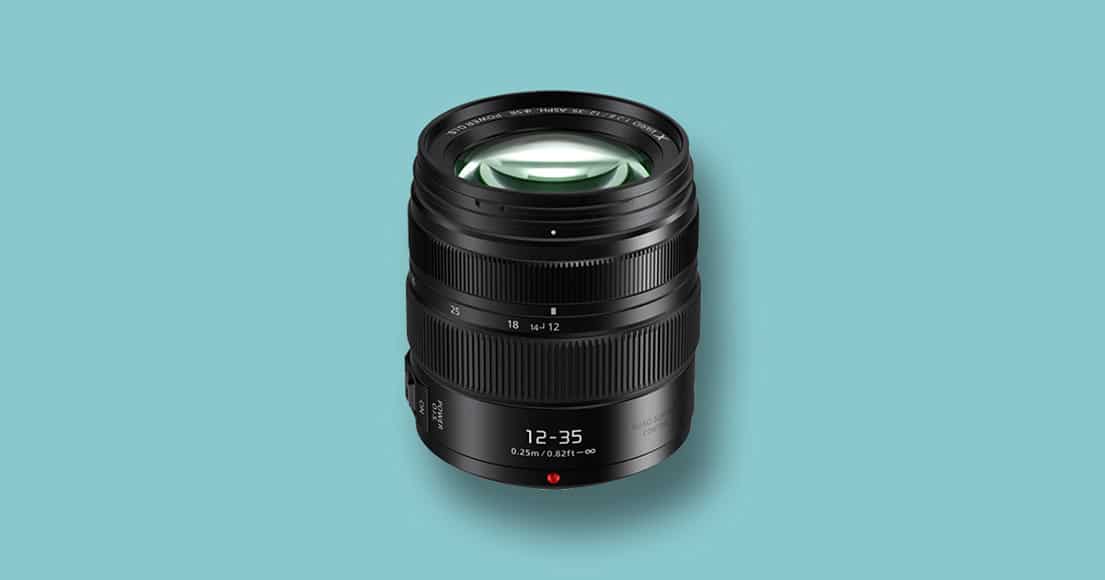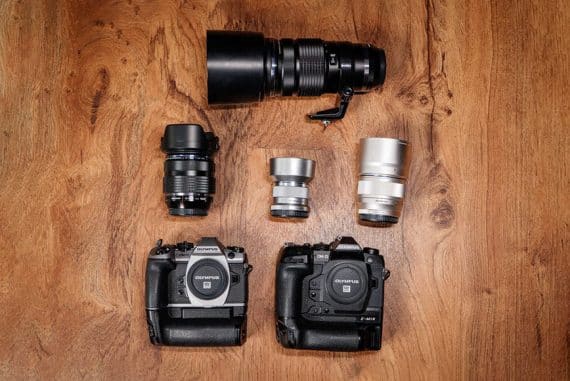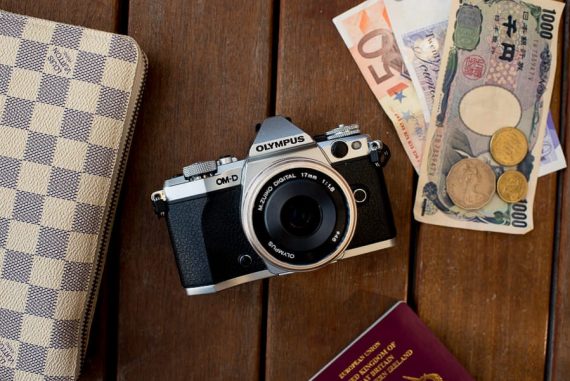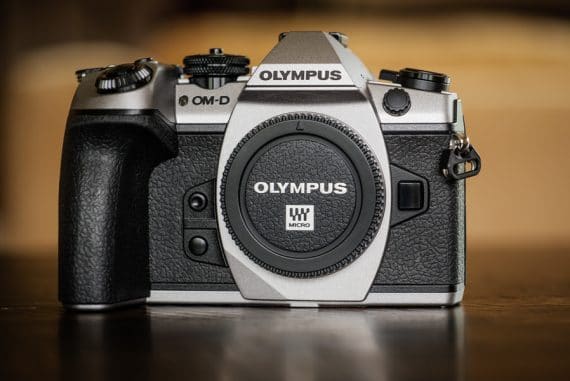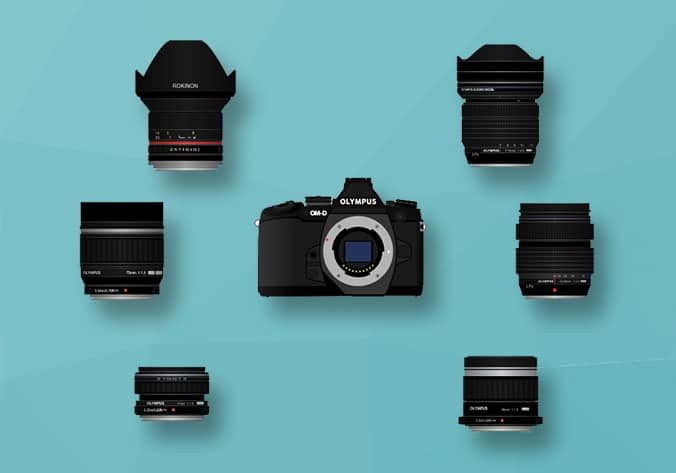
Best Micro Four Thirds Lenses
Micro four thirds lenses have numerous advantages over their counterparts. Check out this in-depth review of the top micro 4/3 lens options of 2023.
Camera Gear Guides | Lens Guides | By Mark Condon | Last Updated: January 8, 2024
If you’re looking for Micro Four Thirds lenses, you’re definitely not alone. The ‘MFT’ or ‘Micro 4/3’ system has witnessed a huge growth in popularity recently.
Micro Four Thirds cameras offers many of the advantages of the latest APS-C sensor mirrorless cameras, at smaller overall sizes (when combined with an equivalent lens), and at much more competitive prices.
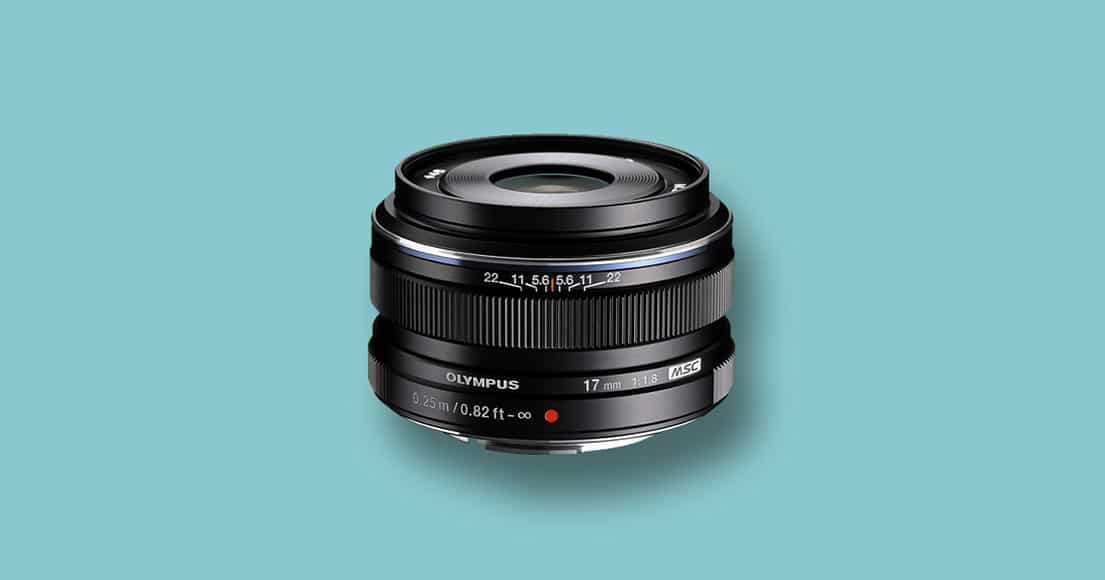
Small, lightweight and fun lens that offers amazing image quality for its price.
Due to the handy 2x crop factor of the sensor, micro 4/3 lenses are more compact and lightweight for their quality and range.
Thanks to the size of the micro four thirds camera sensor, you’re suddenly able to carry a 70-200mm f/2.8 equivalent lens in your jacket pocket!
The biggest benefit of MFT mount lenses is that they can be used on both Panasonic or Olympus cameras, regardless of the brand.
This means photographers can choose from a wide selection of third party options, or even use adapters for DSLR or mirrorless lenses.
With such a huge variety of great ‘glass’ on offer, let’s see what are the best options available this year.
Recommended Micro Four Thirds Lenses
| Image | Product | Features | |
|---|---|---|---|
 | Olympus 17mm f/1.8BEST ALL ROUND |
| View Price → |
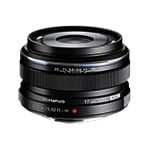 | Panasonic 25mm f/1.7BEST 50MM PRIME |
| View Price → |
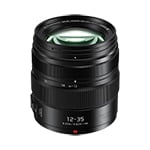 | Panasonic 12-35mm f/2.8BEST MIDRANGE ZOOM |
| View Price → |
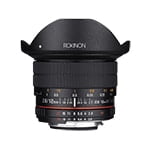 | Rokinon 12mm f/2BEST WIDE ANGLE |
| View Price → |
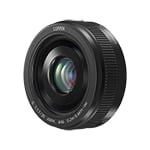 | Panasonic 20mm f/1.7 IIMOST COMPACT |
| View Price → |
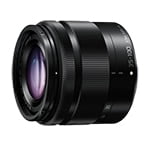 | Panasonic 35-100mm f/2.8 IIBEST LONG ZOOM |
| View Price → |
 | Olympus 40-150mm f/4-5.6AMAZING VALUE |
| View Price → |
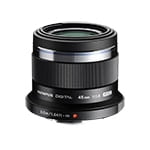 | Olympus 45mm f/1.8BEST BOKEH |
| View Price → |
This guide to the best micro 4/3 lenses is geared mostly to generalist, all-purpose lenses that I deem most useful and best value for money for a wide range of situations. They all pair well with both older and more modern MFT cameras.
Micro 4/3 lenses like the Olympus M.Zuiko f/1.2 Pros or the Voigtlander Noktons sure deliver incredible results, but the price:performance ratio pushes them out of the realms of the average MFT camera owner.
Speaking of ratios, MFT cameras produce images in 4:3, just like many smartphone cameras, which incidentally makes them the ideal size to display in digital photo frames, which seem to favour this format.
I’ve also included a range of prime and telephoto focal lengths, using the 35mm equivalent focal length as a reference point to the 2x crop factor of MFT lenses.
I’ve used Olympus MFT cameras a lot in the past, testing a range of lenses (thanks Olympus Australia) to decide on the ones to include in the selection below.
What is a Micro Four Thirds Lens?
The Micro Four Thirds system, sometimes abbreviated to MFT or M4/3, is a standard released by Olympus and Panasonic in 2008 for the design and development of cameras and lenses for the mirrorless format.
Micro 4/3 lenses are produced by several manufacturers, including Panasonic, Mitakon, Samyang, Sharp, Sigma, Tamron, Tokina and Olympus, with all lenses being compatible with all micro 4/3 camera bodies.
This makes the format a popular choice with photographers, with multiple lens/body manufacturers offering multiple products at competitive prices, all interchangeable across the MFT system.
An MFT lens is designed to cover the MFT sensor size, i.e. 18mm x 13.5mm. This is approximately 30% less than an APS-C sensor, and approximately 75% less than full frame.
On the other hand, it’s around 9x larger than the 1/2.3″sensors commonly found in budget compact cameras, or smartphones.
The advantages of a micro four thirds lens over one manufactured for a larger sensor are size, weight, cost and flexibility, in that any MFT lens you invest in now can be used on any brand MFT camera body you switch to in the future.
If you’ve understood the format, and are now screaming at the screen “what micro four thirds lenses should I buy?!”, I’m glad you asked so politely – let’s dive right in to the reviews!
Micro 4/3 Lenses Reviewed
Olympus 17mm f/1.8
Aperture: f/1.8
Focal Length: 17mm (34mm equivalent)
Dimensions: 2.26 x 1.4 (58 x 36 mm)
Weight: 120 g (0.26 lb)
This was the first Micro Four Thirds lens that made me take proper notice of MFT cameras in general. I spent a month traveling in Europe with the Olympus 17mm f/1.8 attached firmly to an Olympus OM-D EM 5 Mark II (reviewed here), and really enjoyed using it.
As part of the renowned M.Zuiko pro-range of Olympus MFT lenses, the Olympus 17mm f/1.8 benefits from high optical performance and excellent image quality for all shooting environments.
Unfortunately, however, it lacks the dust/splash-proof construction of the more expensive f/1.2 model.
I first heard of this pocket wonder of a lens during an interview, where the photographer waxed lyrical the incredible performance of the Olympus 17mm f/1.8 for street photography.
I was particularly interested why this particular pro had chosen it out of all the best micro four thirds prime lenses on offer.
If you’ve got an MFT zoom lens on the end of your camera, shooting with an MFT prime lens like this Olympus will really open your eyes.
Aside from being faster (larger aperture) than any of the Micro Four Thirds zooms available, it’s also sharper and faster to acquire focus.

Olympus OM-D EM5 Mark II + Olympus 17mm f/1.8 | 1/160 f/1.8 ISO200
The f/1.8 maximum aperture allows you to shoot in low light, and when used up close to your subject, it can deliver very pleasing bokeh and subject separation.
Despite all the other excellent micro 4/3 prime lenses in the range, I’d recommend buying the Olympus 17mm f/1.8 first, due to its versatile focal length – 17mm is equivalent to roughly 35mm in full frame, which is the preferred focal length for so many photographers.
Most people can shoot pretty much anything at this fixed focal length, from landscapes to portraits. I highly recommend you ‘limit’ yourself to this one lens to see how it can help improve your photography.
Being so small and light, the Olympus 17mm f/1.8 is also the perfect complement to compact MFT cameras.
As for image quality, prepare to be amazed – this one lens can produce sharp, contrasty images with a shallow depth of field that is virtually indistinguishable to a lens worth 3x the price.
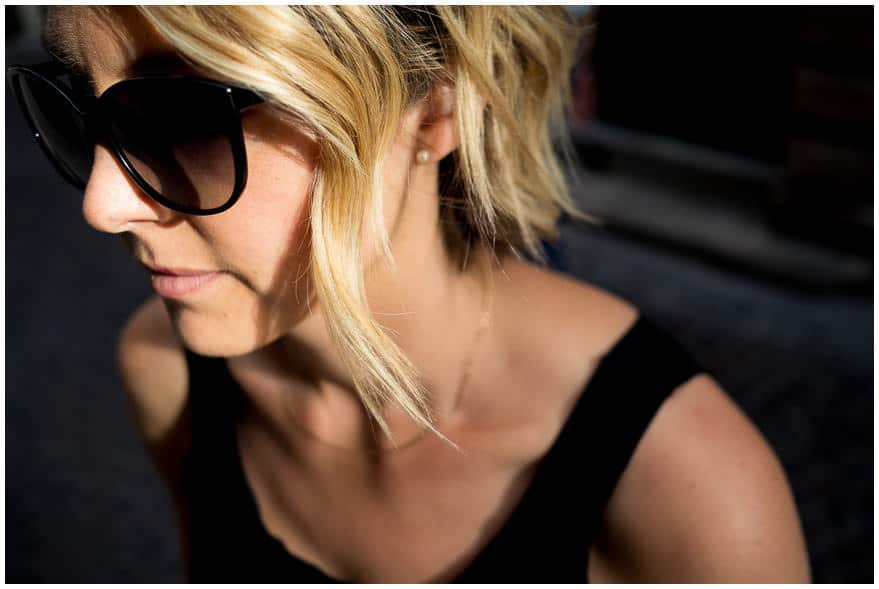
Olympus OM-D EM-5 Mark II + Olympus 17mm f/1.8 | Note the smooth transition from in-focus to out-of-focus areas
It’s not the cheapest of MFT lenses on this list (see latest price here), but it’ll will make an immediate improvement to your photos, especially if you’re coming from a kit lens.
I’m always a little disappointed when friends invest money in a new camera, then keep the kit lens attached. Kit lenses are a great start, but they’re also a bit of a handbrake as to what your high-performance engine is capable of!
Investing in the Olympus 17mm f/1.8 will release your MFT camera’s true potential, and in most cases, it’ll mean you’ll never need to buy another lens! I certainly don’t see any need to…
Available in black or silver – make sure this is the first micro 4/3 lens you buy, no matter the brand of your camera – it really is worth every penny.
Panasonic 25mm f/1.7
Aperture: f/1.7
Focal Length: 25mm (50mm equivalent)
Dimensions: 2.39 x 2.05 in. (60.8 x 52 mm)
Weight: 125 g (0.27 lb)
Most photographers have one of two favourite focal lengths – 35mm or 50mm. As I mentioned above, I’m a huge fan of 35mm, but many of my friends shoot 90% of their pictures with a ‘nifty-fifty‘ of some sort.
If you’ve got a Micro Four Thirds camera, there are a few 50mm-equivalent options on the market in 2024. All of them are excellent performers, which makes the choice to recommend just one rather difficult.
In my own experience of using each variant for a week, I’ve chosen to recommend the Panasonic 25mm f/1.7 – it may not offer the absolute best image quality of all the options, but bang-for-the-buck, it’s unmatched.
The Panasonic 25mm f/1.7 is the MFT equivalent of DSLR shooters’ budget nifty-fifties – razor sharp, fast to focus, small, lightweight and excellent value for money. This makes it one of the best micro 4/3 lenses in the market right now.
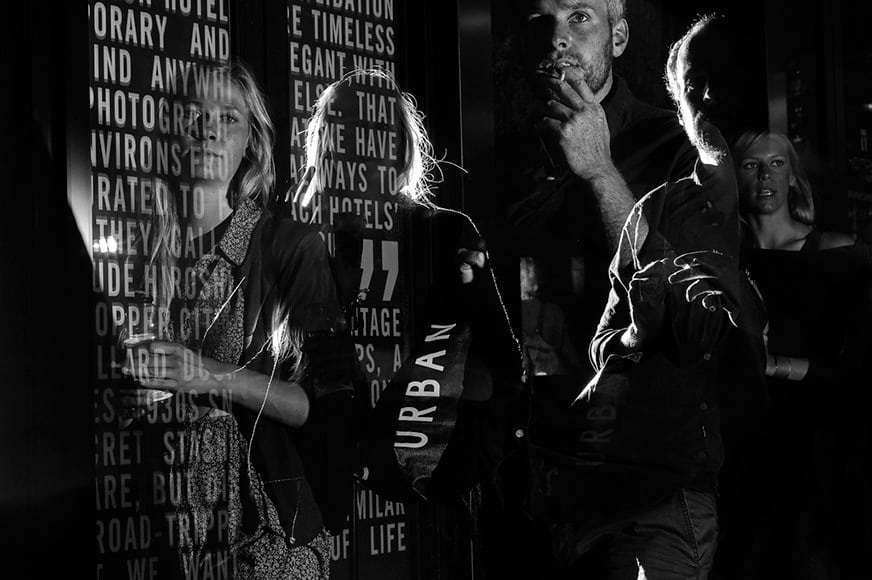
Panasonic GM1 + Panasonic 25mm f/1.4 | © Satoki Nagata
The equivalent 50mm field of view produces almost no distortion, making a flattering option for portraits. If you can step back far enough, it’s also fine for group photos, or even landscapes.
The large maximum aperture of f/1.7 allows in enough light to use your micro 4/3 camera after dark without a flash.
The rounded 7-blade diaphragm construction means bokeh is soft, creamy and distracting. Separating your subject from background distractions becomes very simple indeed.
You can also expect edge-to-edge sharpness at all aperture settings, and no discernible difference in sharpness when shot wide open as opposed to when stopped down.
So what of the other 25mm MFT lens options out there? Well don’t be distracted by the Panasonic Leica Summilux 25mm f/1.4 unless you have deep pockets – sure, it’s a fantastic lens and f/1.4 will suck in a bit more light than f/1.7, but it’s also a lot more expensive, and IMO not worth the price difference.
Then there’s the Olympus 25mm f/1.8, a lens that I really enjoyed using since it’s slightly smaller and lighter than the Panasonic offering. However, it’s also twice the price, and in my mind that’s not justifiable.
For such an affordable m4/3 lens, the Panasonic 25mm f/1.7 is offers a lot in the way of high quality build, despite being so lightweight.
By way of comparison, the Panasonic Leica 10-25mm f/1.7 costs over $1,700 and weighs more than twice the amount.
The metal mount provides durability for active use, and uses multi-coated lens elements that minimize ghosts and flare to further enhance its shooting performance.
All in all, if you’re looking for a 50mm equivalent prime lens to really extend the potential of your Micro Four Thirds system, look no further than this.
The alternatives may seem tempting, but the cost savings of this little Panasonic marvel make it the clear winner.
Panasonic 12-35mm f/2.8
Aperture: f/2.8
Focal Length: 12-35mm (24-70mm equivalent)
Dimensions: 2.7 x 2.9 in. (67 x 73 mm)
Weight: 305 g (0.6 lbs)
Now I’ve recommended a couple of excellent prime lenses, it’s time to tackle a great micro four thirds zoom lens.
First off, some good news. Thanks to Panasonic announcing a second version of this lens in 2018, the pricing on the original Panasonic 12-35mm f/2.8 has come crashing down.
It’s still not budget by any means, but when you compare it to the Canon/Nikon 24-70mm f/2.8 equivalents, it starts to look very good value for money.
The 24-70mm telephoto range has long been the most desirable of many a photographer. Being able to move from wide angle to telephoto in one twist of the barrel makes any 24-70mm the most versatile zoom you’ll ever own.
With the Panasonic 12-35mm f/2.8 attached to your camera, you’ll be able to shoot everything from a wedding all the way down to your holiday with the kids… all without moving your legs much!
Even though I love prime lenses, I have to admit that using a 24-70 equivalent lens like this Panasonic is a huge time-saver, and makes photography a lot easier!
If you absolutely must have the latest model of everything, then by all means, drop an extra few hundred bucks on the version 2 model of this MFT zoom lens..!
However, if you can still find a version 1 of the lens, you can pocket the price difference safe in the knowledge that there really isn’t that much difference – the video below illustrates the marginal difference between the two lenses, concluding that you can save some money with the first version if you can still find it.
Whichever version of this micro 4/3 lens you choose to go with, you can enjoy the immediate benefits of having the smallest and lightest 24-70mm f/2.8 equivalent zoom lens available anywhere! It’s even smaller than most DSLR prime lenses!
Typically, the size/weight of the cumbersome 24-70mm’s of this world is a major hindrance, especially for all day shooting. With the Panasonic 12-35mm f/2.8, zoom photography for me has become pleasurable again!!
If you’re used to shooting with a kit lens or cheaper zoom, the fixed f/2.8 aperture on this Panasonic will be a revelation.
Typically on inferior zoom lenses, zooming ‘closer’ results in the camera being forced to choose a smaller aperture, bringing with it all the inherent drawbacks – it’s fine in good light, but in low light, forget it!
Micro Four Third sensor cameras struggle a lot in low light when compared to cameras with larger sensors. Having a fixed aperture of f/2.8 will mean you can shoot with a slower shutter speed first, without having to dive into the limited ISO capabilities of your MFT camera.

Panasonic GX8 + Panasonic 12-35mm f/2.8 | © Mitchell Kanashkevich
A maximum aperture of f/2.8 isn’t particularly ‘fast’, but it’s a world of difference when compared to f/4 or f/5.6, which is what you’ve probably been used to. f/2.8 shot at 70mm can also produce adequate subject-separating bokeh, which looks great for portraits.
As an added bonus, the Panasonic 12-35mm f/2.8 offers optical image stabilization, which can mean the difference between a blurred and a sharp hand-held shot in low light.
It should also be noted that with the newer version 2 model (here), you can take advantage of slightly improved stabilization too.
The plastic build won’t win any awards, but its weather-sealing and diminished weight make the choice of material completely justifiable. This lens in metal would easily outweigh most cameras.
Image quality is impressive. Due to limitations of the MFT format, don’t expect the same amount of bokeh as the DSLR equivalents, but sharpness is definitely on par when stopped down to around f/5.6.
At f/2.8 sharpness is great, but again, not as good as the expensive DSLR lens beasts out there… but then again, look who’s struggling with a humongous camera/lens set up!
Previously this lens was priced too high for me to recommend it wholeheartedly as one of the best micro 4/3 lenses of the year. However, if you can get your hands on the bargain-basement first version, you’ve just bagged yourself the best value 24-70mm lens you’ll ever own!
Rokinon 12mm f/2
Aperture: f/2
Focal Length: 12mm (24mm equivalent)
Dimensions: 2.85 x 2.33 in. (72.5 x 59 mm)
Weight: 0.54 lbs (245g)
Before you get all excited about the prospect of owning one of the cheapest Micro Four Thirds wide angle lens, hold your horses – this one’s manual focus.
Spit your tea out on your keyboard? No? Good, because it’s really not all that bad…
Normally I’d never recommend a manual focus lens for stills photography here in 2024, especially when there’s an excellent auto-focus equivalent available (in the Olympus 12mm f/2).
However, this time it’s completely justifiable, due to 3 main reasons.
First off, let’s get price out of the way. The Rokinon 12mm f/2 (aka Samyang 12mm) is half the price of the Olympus equivalent. Even if you use a wide angle lens every day of the year, such a price saving is a little hard to ignore. This is quite simply the best wide angle lens for your money.
Second, the focus issue. Video shooters may still be able to deal with MF, but for most of us, AF is always worth the price!
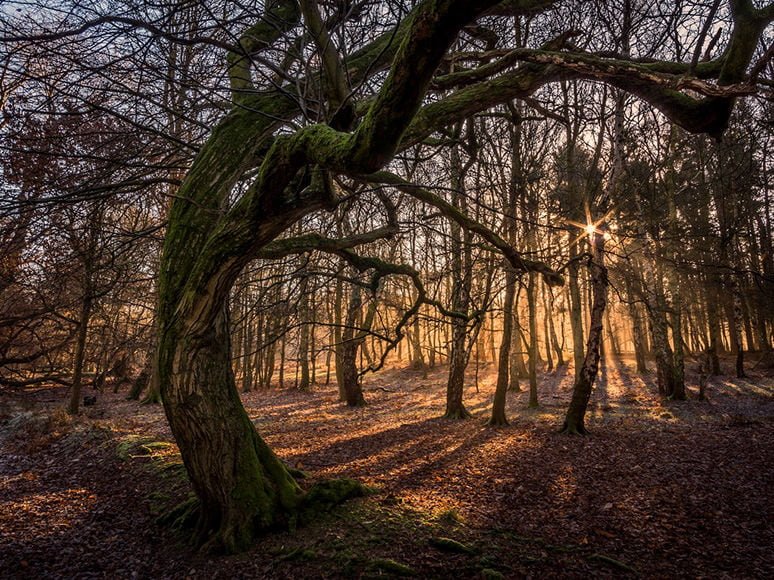
Panasonic GH3 + Rokinon 12mm f/2 | 1/6 f/2 ISO125 | © Damian Ward
However, when we’re talking about a wide angle lens (a 24mm equivalent), MF starts to become more acceptable. Typically wide angle lenses afford a lot more leeway between in/out of focus areas, especially when stopped down to smaller apertures.
Shoot your subject from 3m away using the Rokinon 12mm f/2 at f/5.6, and you can miss focus by a whopping 1.8m, and still have them in focus!
Even when shot wide open, the in-focus area is a forgiving 1.1m – have a play around with this handy tool to see what I mean.
If you’re more interested in shooting landscapes or architecture with your MFT wide angle lens, you can set the Rokinon 12mm f/2 to focus at infinity and be safe in the knowledge that every shot from a distance will be in pin sharp focus.
The final reason for including this manual focus lens in my roundup of the best Micro Four Thirds lenses of the year is its image quality.
I found sharpness at the centre to actually be better than the more expensive Olympus equivalent, and images are vibrant and contrasty at all apertures.

Panasonic GH3 + Rokinon 12mm f/2 | 25s f/2 ISO 125 | © Damian Ward
The maximum aperture of f/2 lets in enough light for evening shots without a flash, but if you consider that most wide angle scenery work should make use of a good tripod, there’s less need for a super fast aperture.
f/2 is still nice to have though, and offers flexibility for handheld work, even when the sun starts to drop. With the high ISO limitations of the MFT sensor, having a lens with a wide maximum aperture is always a good thing…
The only downside of the Rokinon 12mm f/2 is its bulky nature. However, wide angle prime lenses aren’t typically attached to your camera all day long like a 35mm/50mm lens might, so this slight trade off is fine for most people.
A manual focus MFT lens may sound like a drag, but with wide-angle, there really isn’t anything more to think about – you’ll only be adjusting focus when photographing subjects at very close distances, and the rest of the time, you’ll think you have an AF lens attached anyway ;-)
Panasonic 20mm f/1.7 II
Aperture: f/1.7
Focal Length: 20mm (40mm equivalent)
Dimensions: 2.48 x 1 in. (63 x 25.5 mm)
I must admit I only came across this dinky little MFT prime lens recently after a recommendation from a friend.
After having shot with the 17mm Olympus mentioned above for so long, I’d become oblivious to the fact that there were excellent alternatives out there… and the Panasonic 20mm f/1.7 II is among the best MFT lenses.
If you’ve got a small MFT camera, attaching a big lens to the front kind of defeats the benefits of the format if you ask me. The camera will become unwieldy to shoot, and completely ruin the balance in your hand.
Attaching a micro four thirds pancake lens like the Panasonic 20mm f/1.7 II on the other hand is a match made in heaven for small MFT bodies.
Even if I’m using a larger MFT camera such as the excellent Panasonic GH5, I’d still reach for this lens first – it’s just so dinky that it makes any camera body feel great!
Despite weighing less than a pack of cards, the Panasonic 20mm f/1.7 II is surprisingly well-built, with an all metal body and mount that can take some knocks and drops. This is the main difference between the plasticky first version and this newer V2 model.
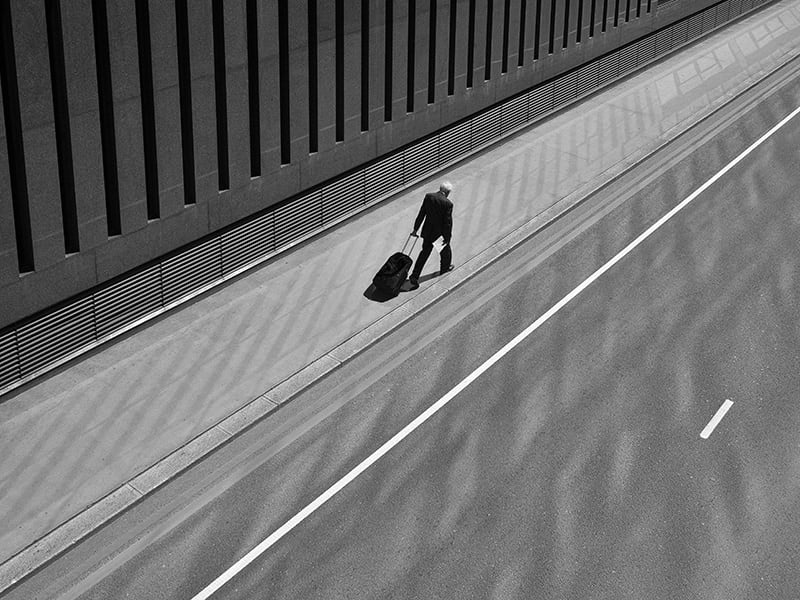
Olympus OM-D E-M5 + Panasonic 20mm f/1.7 | 1/800 f/8 ISO 200 | © Rupert Vandervell
20mm gives a somewhat unorthodox 40mm equivalent field of view, but it’s a focal length that will grow on you the more you use it. Stuck in between two of the most versatile focal lengths, 40mm is actually the best of both worlds.
The f/1.7 aperture is a big help in low light, with MFT cameras typically struggling to produce clean images at higher ISOs.
By shooting wide open at f/1.7, you’re maximising your camera’s ability to suck in as much light as it can, before it needs to resort to a slower shutter speed or higher ISO.
The image quality is exceptional for such an affordable lens (see the latest price here), and the price point makes it an ideal option for beginners as well as those more invested in the micro 4/3 system.
The bokeh at f/1.7 is creamy and smooth, and allows you to separate your subject from the foreground or background with ease. As with most MFT lenses, overall sharpness across the frame peaks at about f/4~5.6.
7 rounded aperture blades help to create the creamy bokeh, providing circular out of focus highlight elements across the frame.
Colour rendition is neutral, with pleasing skin tones straight out of camera. There’s also virtually no distortion.
As for auto-focus performance, it’s something of a mixed bag. When paired with the excellent Olympus OM-D EM 10 Mark II, (a camera with typically lightning fast AF), I found that the Panasonic 20mm f/1.7 II hunts for focus quite regularly, especially in low light.
For this reason, I wouldn’t recommend it for fast moving subjects or street photography. However, if you don’t mind the occasional slow focus time, its combination of portability and stellar image performance makes it a great micro 4/3 lens for travel in particular.
Just watch out for showers since it isn’t weather-proof, but you can’t have everything, especially at this incredibly attractive price point.
All in all, the Panasonic 20mm f/1.7 II is the lens to get if you can’t afford the aforementioned number one pick of MFT lenses – the Olympus M.Zuiko 17mm f/1.8. It’s smaller, lighter, cheaper and has very similar image quality. Definitely one of the best budget micro four thirds lenses out there.
Panasonic 35-100mm f/2.8 II
Aperture: f/2.8
Focal Length: 35-100mm (70-200mm equivalent)
Dimensions: 2.7 x 3.9 in. (67 x 99 mm)
Weight: 320 g (0.7 lbs)
When talking about the most versatile Micro Four Thirds zoom lenses in any category, the Panasonic 35-100mm f/2.8 II is a tough one to beat… although strangely enough, it manages to fly somewhat under the radar.
This is Panasonic’s premium fast telephoto zoom lens, equivalent to a 70-200mm in full frame terms. As such, it’s the perfect complement to the aforementioned Panasonic 12-35mm f/2.8 II – with these two lenses tucked away neatly in just a small camera bag, you’ve can shoot pretty much anything you could ever want.
Be careful that you’re buying the second generation of this lens (available here) – the first is still a great lens, but for some reason, it’s virtually the same price as the newer version, so it doesn’t really make sense to buy into the older technology in this instance.
Despite there being several micro 4/3 zoom lenses with similar focal ranges, there are currently no other 70-200mm equivalent f/2.8 zooms available for Micro Four Thirds.
When compared to a full frame camera’s 70-200mm f/2.8 lens, the Panasonic 12-35mm f/2.8 II is less than half the size and weight, making for an altogether more manageable (and enjoyable!) shooting experience.
It’s also less than half the price – a fact that’s nothing to scoff at, particularly as it puts this traditionally ‘exotic’ zoom focal range into the hands of non-professionals, or anyone who’s unlikely to drop big bucks on a lens.
Many switch to the Micro Four Thirds format due to the size/weight savings of the MFT lenses, and the fact that everything is much cheaper than full frame equivalents is an added bonus.
Despite its relative lightweight for a medium-long range telephoto zoom lens, the Panasonic 35-100mm f/2.8 II is solidly built and weather-sealed. Pairing it with a weather-sealed Panasonic GH4 or Olympus OM-D EM 1 creates an ideal all-weather shooting solution.
Focusing is lightning fast in good light, and actually very impressive in low light too, making the Panasonic 35-100mm f/2.8 II a solid event photography lens for MFT shooters.
Paired with the Panasonic 12-35mm f/2.8 II, (a 24-70mm equivalent) it’s also all you’d ever need to shoot a wedding, sports day, or anything that requires a wide range of focal lengths to be covered in as short a time as possible.
Images are sharp and clear throughout the frame, as you’d expect from an MFT lens from Panasonic’s professional range. There’s also no visible distortion throughout the zoom range.
The real standout feature though is the ‘Power O.I.S’ – image stabilisation that provides an additional 4 stops of aperture flexibility, and a huge benefit for video shooters.
In practice, this means that even when zoomed in at 100mm, you can hand-hold the Panasonic 35-100mm f/2.8 II at much slower shutter speeds that would be normally possible, thus allowing you to keep your camera’s ISO as low as possible.
All in all, this is one impressive telephoto lens at a very manageable size/weight. If you’re used to spending thousands on 70-200mm f/2.8 DSLR equivalents, you’ll be very happy at the price of this Panasonic too.
Olympus 40-150mm f/4-5.6
Aperture: f/4-5.6
Focal Length: 40-150mm (80-300mm equivalent)
Dimensions: 2.5 x 3.3 in. (63.5 x 83 mm)
Weight: 0.48 lbs (220 g)
Normally I wouldn’t recommend a ‘slow’ zoom lens without a constant aperture, especially in the Micro Four Thirds format.
However, I’ve made an exception with the Olympus 40-150mm f/4-5.6, an MFT telephoto lens that offers great performance at a bargain price.
As an 80-300mm equivalent zoom, this lens is obviously suited for shooting faraway objects, or to compress the background behind your subject.
Used wide open at its widest angle (f/4 at 40mm), the Olympus 40-150mm f/4-5.6 is impressively sharp, and becomes even sharper if you have enough light to be able to stop the aperture down to f/5.6.
This makes it equally suited for portraits, whereby the 40mm gives a flattering 80mm field of view.
The mid-range (49-70mm) of this MFT telephoto is where it really shines, with good performance at f/4, and sharpness increasing overall at f/5.6, and remaining constant to around f/11.
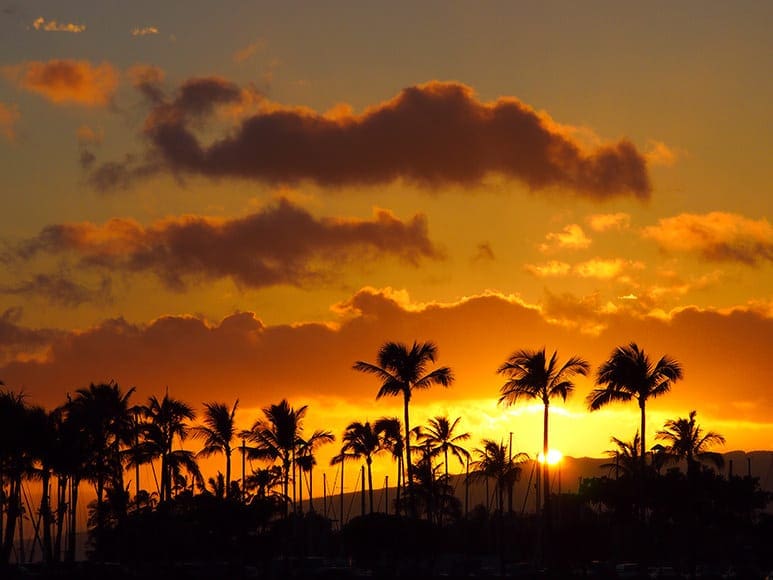
Olympus PEN E-P3 + Olympus 40-150mm f/4-5.6 | 1/640 f/9
From 100-150mm, sharpness is still good, but I have to say that it’s not quite as sharp as the wider end of the spectrum.
This is a common trait on all cheap zoom lenses – if you’re after stellar image performance right throughout the zoom range (and a constant, fast aperture), you’ll have to stump up over ten times more for the Olympus 40-150mm f/2.8 – an incredible lens, but bulky and expensive.
On the topic of price, the Olympus 40-150mm f/4-5.6 really is unbeatable value for money – where else can you get such a long-range telephoto micro 4/3 lens for under $130?!
Know that you’re getting a helluva lot of lens for an absolute bargain price.
Auto focus speeds are excellent, with the lens locking on to a subject well within a second through its entire focusing range.
Another huge benefit of the Olympus 40-150mm f/4-5.6 is its size/weight – at only 0.48 kbs (220g), it’s smaller and lighter than most DSLR prime lenses!
Being able to fit a 300mm equivalent zoom lens into your jacket pocket is nothing short of incredible, and highlights a major advantage of the micro 4/3 format over APS-C or full frame.
In a world where most photographers have their eyes set on full frame sensors, it’s refreshing to see that MFT, with a sensor less than half the size of what’s normally considered ‘standard’ for professionals, still manages to deliver the goods.
While we’re on the topic, there are still a great many successful professionals who use, and swear by the MFT format for their work. Don’t let sensor size be a limiting factor to what you think you can achieve ;-)
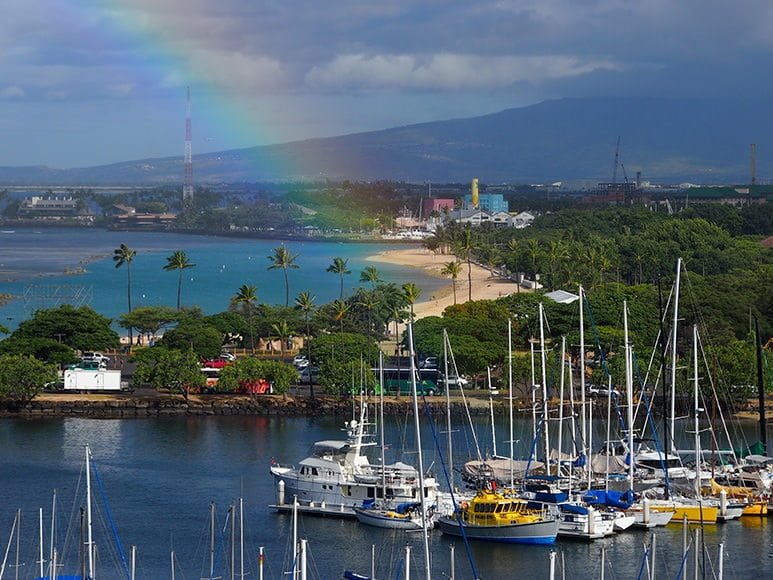
Olympus PEN E-P3 + Olympus 40-150mm f/4-5.6 | 1/800 f/8
As you’d expect from such a lightweight, inexpensive lens, build quality is basic, with the construction being almost completely plastic.
Similar to most kit lenses, a lot of the cost is shaved off in building a lens that won’t take too many bumps, but as long as you look after it, you should be fine.
One other thing to consider of course is the aperture, which will certainly be limiting in low light. Even if you have one of the professional Micro Four Thirds camera bodies (such as the excellent Panasonic GH5), you cant really rely on clean high ISO performance, meaning that you’ll definitely struggle to shoot at f/4 with shutter speeds around 1/100.
The Olympus 40-150mm f/4-5.6 is intended for daylight shooting, so as long as you’re alright with this, you’ll be good to go, unless of course you’re willing to use a tripod.
There are a few alternative long-range MFT zoom lenses, but for its price:performance ratio, this one is the best by far.
If you’re a professional wildlife or sports photographer, you’ll need to cough up a lot more for the f/2.8 version, but as long as you’re happy to shoot in decent light, the Olympus 40-150mm f/4-5.6 delivers excellent bang for the buck in an impressively compact package.
For fans of long-range photography – this is definitely the first micro four thirds zoom lens you should get.
Olympus 45mm f/1.8
Aperture: f/1.8
Focal Length: 45mm (90mm equivalent)
Dimensions: 2.2 x 1.8 in. (56 x 46 mm)
Weight: 0.25 lbs (116 g)
For many, the Olympus 45mm f/1.8 is the preferred lens for portrait photography. As a 90mm equivalent, it’s perfect for flattering head/full-body shots.
The combination between a mid-range focal length and a fast f/1.8 aperture delivers the creamiest, most shallow depth of field you’re likely to see from any of the micro four thirds prime lenses.
For those Micro Four Thirds naysayers who don’t believe shallow depth of field is possible with such small sensors, think again! This is the lens that says otherwise…
Whilst there are several other f/1.8 (and faster) MFT lenses available, using slightly longer focal lengths such as this 90mm equivalent, really helps to produce subject separation akin to more expensive (and bigger!) APS-C and full frame sensors.
At less than the weight of a paperback book, the Olympus 45mm f/1.8 is a perfect lightweight lens for travel or for everyday walk-around shooting.
Attached to the front of even the smallest MFT camera, it feels well-balanced and unobtrusive. It really is a tiny lens that makes your camera a pleasure to use.
At f/1.8, the Olympus 45mm f/1.8 is nice and sharp, with the effect exaggerated due to the pleasing out of focus (bokeh) elements that surround the in-focus elements.
Stopping down to f/2.8 increases overall sharpness slightly, but you’re not buying a lens like this to stop it down – f/1.8 and maximum bokeh is where the fun’s at!
f/1.8 will also allow for some low-light photography without the need to resort to your camera’s flash. As long as you can hand hold a shot at around 1/100 (most people can!), you should be able to capture photos after sun set without having to increase your ISO to where things start getting messy.
If you’ve got deeper pockets or are a working pro who relies on the shallowest depth of field or being able to shoot in lower light, there’s also the Olympus 45mm f/1.2 PRO.
Optically the lens is excellent, delivering contrasty images with pleasing skin tones. There’s zero distortion and minimal chromatic aberration.
Interestingly enough, the Olympus 45mm f/1.8 produces zero flare even when shooting direct into the sun – something that many much more lenses fail to accomplish.
Auto focus is lightning fast, and keeps up with the fastest moving subjects surprisingly well. I like the ability to correct focus, or enable manual focus override simply by turning the focus ring – every lens should have this useful feature, in my opinion.
As for build quality, well it may look like a shiny metal lens but the Olympus 45mm f/1.8 is in fact 100% plastic-fantastic!
I’m happy for the trade-off though, because at 0.25lbs (116g), this is another MFT lens that fits into a jacket pocket, and feels like nothing when attached to an MFT camera body.
As for the price, the Olympus 45mm f/1.8 is another bargain lens, and a no-brainer for anyone who’s happy to shoot at a fixed medium-range focal length.
90mm may be somewhat limiting if you don’t have the space to back up, but as long as you’re outside or have adequate room, it’s actually quite flexible.
If you’re after an micro four thirds lens for portrait photography, make no mistake – this is the first (and last) lens you’ll likely ever need.
Affordable, lightweight and small – these are the 3 main benefits of MFT lenses, and a fast f/1.8 aperture makes this one a great lens to add to your arsenal.
Frequently Asked Questions
What are Micro Four Thirds lenses?
Micro Four Thirds lenses are those that have been developed to fit the Micro Four Thirds camera system. They are generally smaller and cheaper than DSLR lenses because the cameras have smaller sensors.
Who makes Micro Four Thirds lenses?
You can find Micro Four Thirds lenses from a range of different camera brands including Kodak, Olympus, Panasonic, Cosina Voigtländer, DJI, Kowa, Xiaomi, Mitakon, Samyang, Sharp, Sigma, Tamron, Tokina, and Veydra.
Are all Micro Four Thirds lenses compatible?
Yes – one of the great things about the Micro Four Thirds system is that you can use any MFT lens on any brand MFT camera body.
What Micro Four Thirds lenses should I buy?
As with anything camera or lens-related, it depends largely on your needs and preferences. For an all-round lens that’s sharp and versatile, our top pick is the Olympus 17mm f/1.8.
Final Words
In writing this roundup, I’ve had to exclude many excellent Micro Four Thirds lenses for the sake of simplicity. There’s really so many great options on offer for this intriguing format, that things can get rather overwhelming.
One of the benefits of the MFT system is the sheer breadth of choice when it comes to lenses, with most of them at much more affordable prices than DSLR equivalents.
However, I believe that the lenses reviewed above represent the absolute best performance for your money in 2024.
Yes, there are many good alternatives out there, but stick to this list and you can build yourself an affordable, high-performance photography kit can that can keep up with the big boys with their big(ger) sensors ;-)

Small, lightweight and fun lens that offers amazing image quality for its price.





